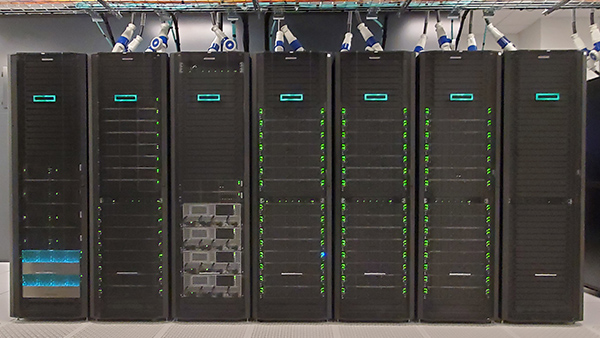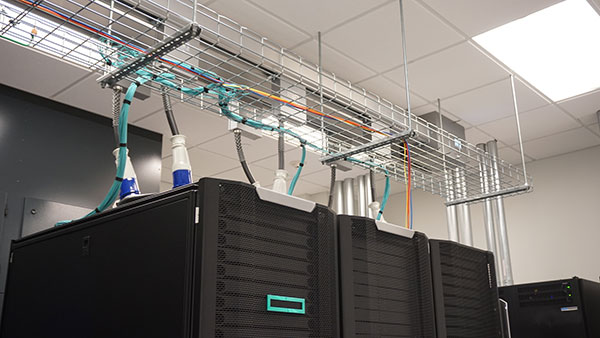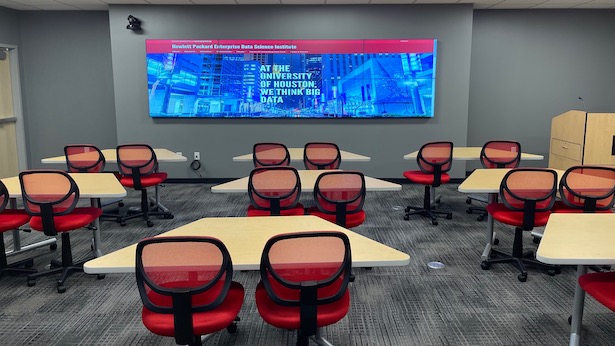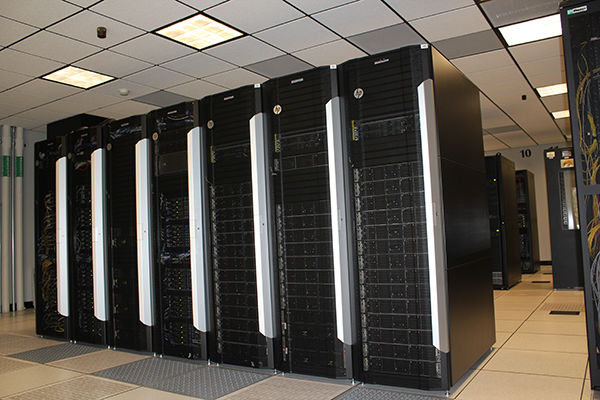
Resources
The Hewlett Packard Enterprise Data Science Institute (HPE DSI) owns and maintains several high performance computing (HPC) platforms that are housed in RCDC and managed by the UH Research Computing Center (RCC). We support researchers and projects by offering leading-edge computational resources. Capabilities include high-capacity storage and backup, parallel and big data applications, high-speed networking, and access to widely used software. The HPE DSI has two large clusters (Carya and Sabine) to support scientific computation, big data applications, and large-scale data storage. All the nodes of each one of these clusters are connected by high-speed networks. Between local and shared disks, the clusters offer more than 1600 TBs of high-performance total disk space.
Download Facilities Descriptions (.docx)


Sabine

Visualization Theater
HPE DSI is excited to open the doors of its new Data Visualization Laboratory located in the AERB building, 2nd floor, room 201, with dynamic displays, furniture and systems to support a variety of research, workshops, training, and presentation projects. You may book this facility by contacting Helaine Guillory at hguillor@central.uh.edu.
Download Visualization Theater Description (.docx)
Software
Compilers: We have the latest GNU and Intel C/C++/Fortran compiler and PGI compiler suites, as well as Nvidia’s CUDA compiler for GPU computing. We also maintain compilers for other languages as requested including Java.
Programming environments: We maintain several versions of Python, Matlab, and R, as well as several other languages and environments. These environments include many commonly used third-party libraries and packages.
Data-processing tools: These include programs for dealing with large-scale data formats, like HDF5 and NetCDF.
Numerical libraries: These include Intel’s Math Kernel Library (MKL), a set of highly tuned linear algebra routines; the GNU Scientific Library (GSL); FFTW Fourier transform library; and others.
Community codes: We have a large number of commonly-used scientific software packages including codes for molecular dynamics, such as LAMMPS and NAMD; and visualization, such as ParaView; and many more.
Training and Workshops
We provide trainings and workshops to learn about more advanced features and capabilities of our high performances computers and software. Courses are offered through the HPE DSI.
